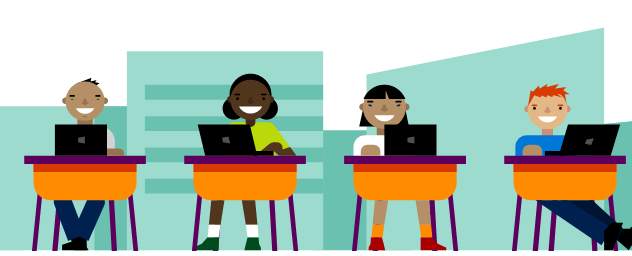The United States is a global leader in technology. A key driver of the American economy, high tech industries account for roughly 12 percent of the U.S. total employment, but contribute nearly one quarter of economic output. Despite the influence and importance of tech, our country faces a serious workforce gap — nearly 500,000 competitive, well-paying computing jobs are currently unfilled across the United States. With only one in four K-12 schools offering classes dedicated to computer science, and only 40,000 students graduating from college with computer science degrees every year, the workforce skills gap will only continue to grow. This serious challenge facing the American workforce and tech industry is a fundamental issue for ACT | The App Association, and one we are dedicated to address on behalf of the American app developers, innovators, and small business tech companies that depend on skilled workers to drive their businesses.
The App Association represents more than 5,000 small and medium-sized app companies in the United States and around the world. Regardless of the size or maturity of a company, access to skilled coders can make or break a company’s success, and our members have voiced concerns about the lack of well-trained software developers in the workforce pool. To further advocate for solutions to this critical challenge, the App Association co-founded the Computer Science Education Coalition (CSEC) last year. We are committed to this important cause, and will continue to work with stakeholders across the technology and education ecosystem to expand K-12 computer science education.
Already, the United States has made important progress in computer science training. According to the College Board, the number of American students who took an Advanced Placement (AP) computer science exam grew an astounding 195 percent between 2006 and 2016. This year, the College Board introduced the new AP Computer Science Principles exam, which frames the course as a means to explore and address real life problems, instead of focusing solely on programming languages like Java. The new exam was designed to attract students uninterested in or unengaged in computer science, and it has paid dividends. This year, a record number of women and underrepresented minorities took AP computer science exams. According to Code.org, the new exam helped increase female students’ participation in computer science courses by 135 percent, while underrepresented minorities’ participation increased by 170 percent!
Though these statistics are indicative of a step in the right direction, our country still has a long way to go. The significant growth in students taking AP computer science exams is not enough to fill the vast talent gap. While female and minority students marked an increase in exam participation, female students still only account for 27 percent, and underrepresented minorities 20 percent, of all students taking computer science exams.
Moreover, interested students in rural parts of the country struggle to gain access to computer science education due to challenges in broadband connectivity. More than 23.4 million rural Americans are without strong access to internet, and thus, lack a vital resource to pursue these academic endeavors. Utilizing unused spectrum bands through television white spaces (TVWS) is a potential solution to secure strong broadband connectivity and enable students to access and excel in computer science classes. A recent App Association blog explores the uses of TVWS for workforce development programs that hinge on computer science foundations.
We must continue the momentum to encourage more K-12 schools to offer computer science curriculum. The future of our students and the American workforce depend on it.
Image: Microsoft
